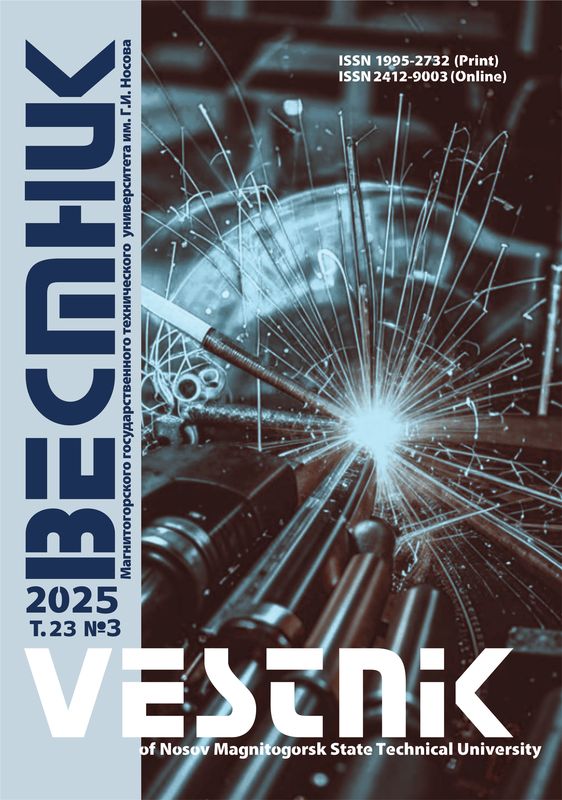Abstract
Problem Statement (Relevance): This article describes the methods and results of securing open-pit walls aimed at protecting the hazardous areas of haulage benches from sudden collapses and landslides. The methods highlighted allow for a number of factors, such as the rock mass structure; current earth movements; secondary stress-strain state creation patterns. Methods Applied: Advanced geophysical methods were applied for the comprehensive instrumentation-based analysis of the rock mass structure; satellite geodesy was applied for the definition of both tectonic and man-affected stress-strain states of a rock mass while taking into account the creeping and short-term cyclical movements in the large and small bases. The geophysical methods were applied to check the open-pit field for tectonic faults while identifying the most hazardous areas adjacent to the areas where the pit walls cross the major tectonic faults found. After that the locations of the major faults were verified and the medium size faults were located and documented. As a result, a fault map was generated for the near-wall rock mass. Direct methods of geodesy were used to register the changes in the initial stress-strain state of the rock mass with the definition of the space components of two current earth movements – the creeping movement and the short-term cyclical movement. The stress-strain state of the rock mass was analysed through solving an inverse geomechanical problem based on the measured rock mass deformations. Findings: The comprehensive approach described in the article, which includes the analysis and synthesis of the deposit tectonics data and the experimental and theoretical studies of the rock mass stress-strain state based on satellite geodesy and the geophysical analysis of the structure, helped accomplish the task of identi-fying hazardous areas in terms of haulage bench stability.
Keywords
Protection of haulage benches, wall stability, landslides, stress-strain state, rock mass structure, analysis, instrumentation control
1. Melnikov N.N., Kozyrev A.A. Changes in the earth movements in large-scale deep pit mining operations. Gornyi infor-matsionno-analiticheskii byulleten’ [Mining Newsletter], 2015, no. S56, pp. 7-23. (In Russ.)
2. Melnik V.V., Pustuev A.L., Zamyatin A.L. Application of the spectral seismic survey technique to predict and reduce the risk of accidents and disasters in mining. Gornyi zhurnal [Min-ing journal], 2012, no. 1, pp. 86-89. (In Russ.)
3. Zuev P.I., Vedernikov A.S., Grigoriev D.V. The geophysical analysis of the rock mass in the combined mining area of the Goroblagodatsky Iron Ore Deposit. Gornyi informatsionno-analiticheskii byulleten’ [Mining Newsletter], 2012, no. 11, pp. 114-121. (In Russ.)
4. Kallistova T.V. The relationship between the rock tectonics and the stress-strain behaviour of structure bases. Gornyi in-formatsionno-analiticheskii byulleten’ [Mining Newsletter], 2013, no. 5, pp. 163-168. (In Russ.)
5. Zamyatin A.L. Experimental studies of rock mass at mining sites. Problemy nedropol'zovaniya [Problems of Subsoil Use], 2014, no. 2, pp. 29-33. doi:10.18454/2313-1586.2014.02.029
6. Dalatkazin T.Sh., Konovalova Yu.P., Ruchkin V.I. Experi-mental research into possible use of radonometric techniques for geodynamic zoning. Litosfera [Lithosphere], 2013, no. 3, pp. 146-150. (In Russ.)
7. Zheltysheva O.D., Efremov E.Yu. Advanced technologies for monitoring the stability of open-pit walls. Marksheyderiya i nedropol'zovanie [Mine Surveying and Subsoil Use], 2014, no. 5 (73), pp. 63-66. (In Russ.)
8. Panzhin A.A. Spatiotemporal geodynamic monitoring of mining objects. Gornyi zhurnal [Mining Journal], 2012, no. 1, pp. 39-43.
9. Ruchkin V.I., Zheltysheva O.D. The effect of technogenic load on the rock mass stress-strain state dynamics. Problemy nedropol'zovaniya [Problems of Subsoil Use], 2015, no. 1 (4), pp. 26-31. doi:10.18454/2313-1586.2015.4.888
10. Ruchkin V.I., Konovalova Yu.P. Changes in the stress-strain state of a geological environment caused by a combination of tectonic and technogenic factors present at mining sites. Problemy nedropol'zovaniya [Problems of Subsoil Use], 2015, no. 1 (4), pp. 32-37. doi:10.18454/2313-1586.2015.4.889
11. Panzhin A.A., Panzhina N.A. Satellite geodesy-aided monitoring in mineral mining in the Urals Region. Fiziko-tehnicheskie problemy razrabotki poleznykh iskopaemykh [Journal of Mining Science], 2012, no. 6, pp. 46-55. doi:10.1134/S1062739148060056
12. Sashourin A.D., Panzhin A.A. Geodynamic monitoring at the Kachkanar GOK open pits. Problemy nedropol'zovaniya [Problems of Subsoil Use], 2015, no. 1 (4), pp. 45-54. doi:10.18454/2313-1586.2015.01.045
13. Efremov E.Yu., Zheltysheva O.D. The method for stress de-termination at extended rock mass areas. Izvestiya vysshikh uchebnykh zavedenii. Gornyi zhurnal [Proceedings of univer-sities. Mining Journal], 2013, no. 7, pp. 34-39.












